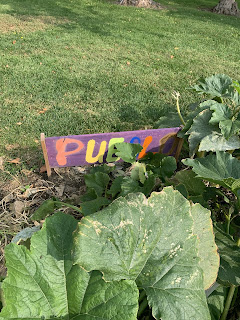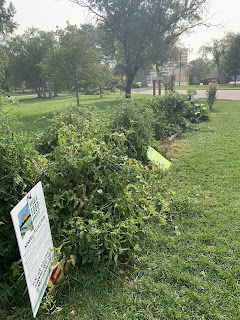Posted by Dr. Jim Klett, Colorado State University, Department of Horticulture and Landscape Architecture
Approximately ninety five professional and advanced Master Gardeners rated over 1,150 flowering and foliage plants over the week of August 3-8, 2020. We were not able to have an official evaluation day due to COVID 19 and University ruling on not having public gatherings on University property.
The garden is planned and maintained each year by the Department of Horticulture and Landscape Architecture with guidance from a committee of growers, flower seed companies, and public garden horticulturists.
The following are the winners for "Best of Show", "Best New Variety", "Best Novelty" and "Best Container". For more information on these and other outstanding annuals from 2020 trials visit www.flowertrials.colostate.edu
Best of Show – Dahlia ‘Lubega® Dark Velvet’ from Benary+
This was a ‘show stopper’ due to the strong contrast between the dark purple/velvet foliage and beautiful bicolor blooms. Plants were extremely attractive all by themselves with the dark foliage coloring and uniform compact growth habit. The prolific flowers were held high above the plants to create maximum show. Blooms had single petals which attracted many bees. Plants did not have any sign of powdery mildew even late in the season.
Best Novelty – Colocasia ‘Heart of the Jungle™’ from Proven Winners
This plant makes a dramatic statement to any landscape with its large, dark foliage. The impressive size and shape creates a very tropical and exotic appearance. It is grown for the beautiful foliage which makes a great structure plant in the garden. It does best in full sun.
Best New Variety – Centaurea ‘Snowy Owl’ from Terra Nova
Unique silvery foliage made this plant a standout in the garden. Large, velvety leaves added an interesting textural element. The beautiful gray color made a great combination with other plants. It was highly visible in the garden and very uniform.
Best Container – Petunia ‘Bee’s Knee’ from Ball FloraPlant
The abundant flowers and great two tone yellow color provided exceptional flower power on very vigorous and well branched plants. It was noted for having the best yellow of any petunia in the trial. The color held up very well in the high light intensity of Colorado.




























